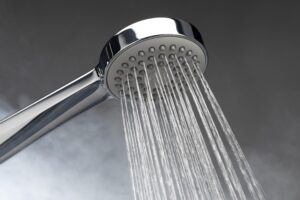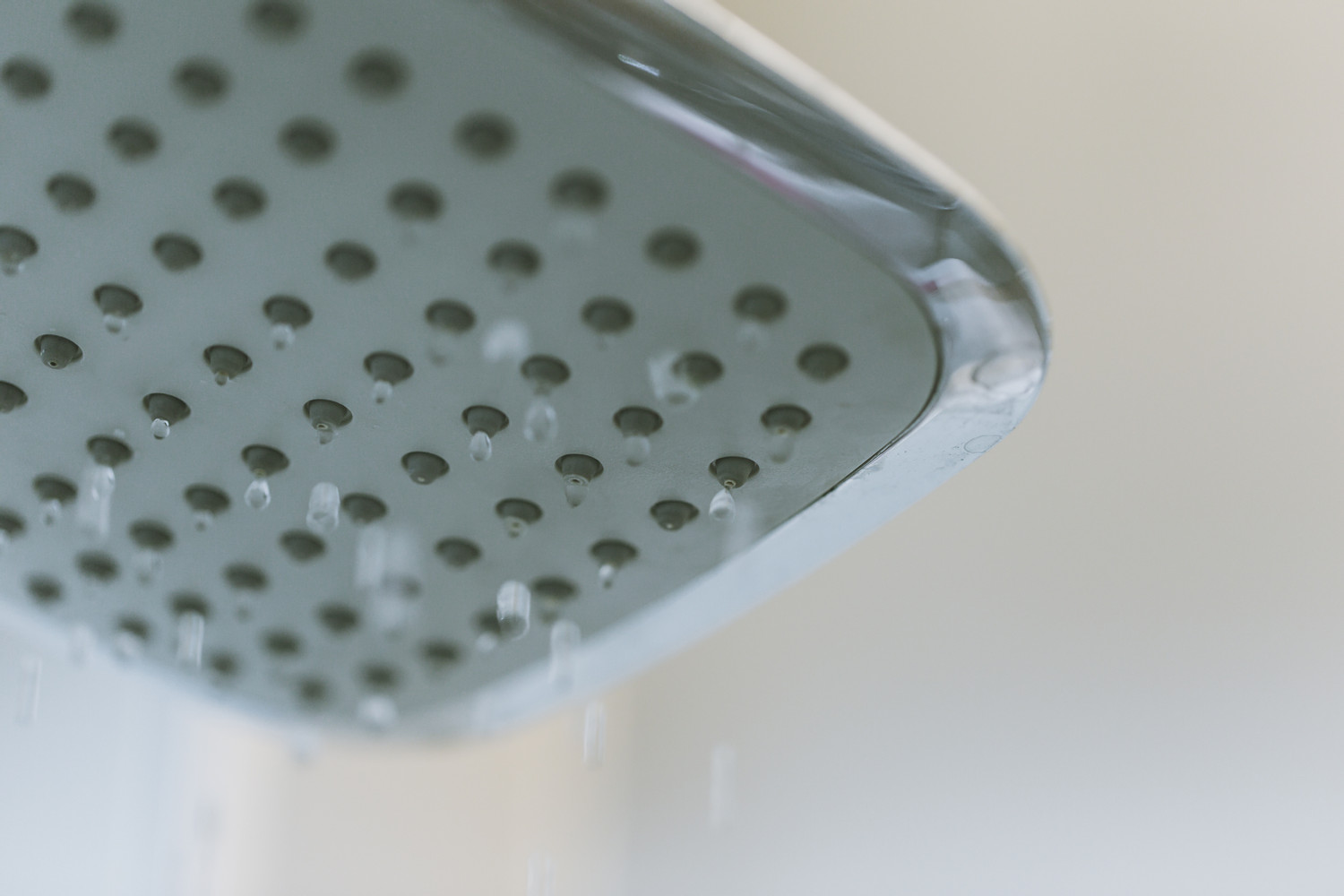Low hot water pressure can be incredibly frustrating, whether you’re trying to enjoy a hot shower or rinse the dishes. Fortunately, this guide explores the most common causes and offers clear, actionable steps to restore your hot water flow. We’ll also help you determine when it’s time to call in a professional.

What Is Low Hot Water Pressure?
Low hot water pressure means your hot taps and showers are delivering a weaker stream than expected. This often points to issues within your plumbing system, water heater, or supply lines. It can range from a mild annoyance to a sign of a serious plumbing issue.
How Does It Affect Your Home?
- Showering becomes time-consuming and uncomfortable.
- Dishwashing may be ineffective.
- Filling a bath takes much longer than normal.
- Appliances like washing machines or dishwashers may underperform.
- Water heating systems may strain due to restricted flow.
Top 10 Common causes of low hot water Pressure
1- Dirt/Debris build-up
Dirt and debris build-up can significantly impact environments, particularly in residential and commercial spaces. It can impair machinery functionality, reduce air quality, and create an unhygienic situation conducive to disease proliferation. Regular cleaning and maintenance are crucial to prevent such build-up and ensure a safe, operational, and healthy environment.
2- Hot Water Shutoff Valve Is Partially Closed/Broken
A partially closed or broken hot water shutoff valve can significantly affect the water flow in your home. This problem could cause water heating issues, irregular water flow, and possible leakages. Immediate resolution is necessary to prevent further damage; therefore, contact a professional plumber to repair or replace the faulty valve.
3- Rusty/Corroded Pipes.
Rusty or corroded pipes are common in older buildings, indicating severe wear and tear over time. These obsolete pipes pose a health risk as rust can contaminate water, resulting in a metallic taste. Moreover, severely corroded pipes can lead to leaks, causing damage to walls, floors, and other property.
4- Hard Water Build Up
Hard water build-up is a common issue in many households. It is the result of high mineral content in water, predominantly calcium and magnesium, which leaves behind a chalky, often white, residue. Known as scaling, this buildup can lead to blocked pipes, reduced water flow, and can significantly impact the efficiency of household appliances.
5- Showerhead & Taps
Showerheads and taps are integral components of a household’s bathroom setup. They control the flow of water for basic hygiene purposes. Modern designs offer features like temperature control, water-saving functionality, and varied spray settings. Showerheads and taps come in a range of styles, materials, and finishes, thus contributing to the overall aesthetics of the bathroom.
6- Incorrect Installation or Pipe Sizing
Improper pipe diameters or sharp bends can restrict water flow. A plumber can assess and correct poor installation. This is common in DIY or poorly managed renovations.
7- Municipal Supply Issues
Check with neighbours or your water supplier if the issue affects the entire area. Report issues when confirmed. Water suppliers often post service updates on their websites or social media platforms.
8- Water Leaks
Look for damp patches, stains, or movement of the water meter with the taps off. A leak can drastically reduce pressure and should be fixed immediately. Underground leaks are more difficult to detect and require professional diagnostics.
9- Filter Blockage (Unvented Systems)
Unvented cylinders often have filters that clog over time. A heating engineer can clean or replace these. Regular inspection ensures optimal water flow.
10- Boiler or Cylinder Issues
On combination boilers, low pressure (under 1 bar) or a faulty diverter valve may affect the hot water supply. For conventional boilers, inspect the cylinder, cold water tank, and system valves. Old or inefficient units may also underperform.
How to Diagnose the Problem?
Step-by-Step Checks:
- Compare Hot vs Cold Pressure:
- Is the cold water flow strong?
- If yes, the issue is likely in the hot water system.
- Check One Fixture or All:
- Problem in one tap = localised blockage.
- The problem throughout is = central system fault.
- Test Water Flow Rate:
- Use a 1-litre jug and a stopwatch.
- A healthy hot tap should deliver 10–15 litres per minute.
- If <10 LPM, the pressure is low.
- Test Pressure With a Gauge:
- Attach to an outdoor or kitchen tap.
- Ideal pressure: 40–60 PSI.
- Below 30 PSI? Time to investigate further.
- Inspect for Leaks:
- Shut off the internal stopcock.
- Check your water meter: movement suggests a hidden leak.
- Examine Boiler Settings:
- Boiler pressure should read 1–1.5 bar.
- Error codes can indicate flow or heat exchanger issues.
Solutions to Low Hot Water Pressure
Inspecting and Modifying the Water Filter
Water filters, if not cleaned or replaced routinely, can become clogged, resulting in reduced hot water flow. Inspecting and adjusting the water filter can often rectify low-pressure problems.
Addressing Water Heater Complications
Issues with the hot water system, such as sediment accumulation, malfunctioning pressure regulators, or problems with the hot water valve, can be tackled by regular maintenance or seeking expert assistance. Hot water plumbers can offer specialised services to address these issues.
Preventative Maintenance Tips
- Clean aerators and showerheads monthly.
- Install a water softener in hard water areas.
- Schedule an annual inspection for boilers and cylinders.
- Flush your water heater once a year.
- Ensure stopcocks and valves are fully open.
- Monitor your system pressure monthly.
When to Call a Plumber?
DIY not solving the problem? It’s time to bring in the pros if:
- Water pressure is low in both hot and cold taps.
- There’s visible leakage or signs of corrosion.
- Your boiler shows low pressure or error codes.
- You suspect pipe damage or improper installation.
- Your water system hasn’t been serviced in over a year.
Our expert plumbers are just a call away. Book a professional inspection today at 020 3674 8514 or request a quote online.
In Conclusion:
- Low hot water pressure can arise from various reasons, including plumbing issues and complications with the water heater.
- Regular upkeep of water systems and plumbing can avert low-pressure problems.
- Hard water and sediment accumulation are common reasons for reduced hot water flow.
- Expert plumbing services can provide practical solutions to restore optimal hot water pressure.
Remember, while it’s crucial to comprehend the reasons for low hot water pressure, consulting experts when necessary ensures the durability and efficiency of your home’s plumbing system.
FAQs:
1- Why is the Water Pressure Low in Homes?
Low water pressure in homes can arise from various reasons, such as blocked plumbing, a malfunctioning pressure regulator, or aged, corroded pipes. Shared water supply during high-demand periods can also lead to low pressure. In some instances, the problem might originate from the municipal water supply.
2- Why is my hot water pressure weak, but cold alright?
Your hot water pressure might be weak while the cold is alright, due to several factors. The problem could originate from a malfunctioning water heater, sediment accumulation in hot water pipes, or a faulty pressure reduction valve. It might also be because of a leak in the hot water system or an incorrectly adjusted temperature-pressure relief valve.
3- What leads to low water pressure in only hot water?
Low water pressure solely in hot water can arise from various issues such as a malfunctioning hot water heater, obstructions caused by mineral deposits in the pipes, or even a shut-off or partially closed shut-off valve. These factors can hinder the flow of hot water, thereby reducing its pressure.
4- What causes low hot water pressure in the UK?
Low hot water pressure in the UK can be caused by several factors. The common causes include a faulty pressure relief valve, clogged pipes or a malfunctioning hot water heater. Other causes can be the distance from the water heater to the tap, outdated plumbing systems, or merely because the shut-off valve is not fully open.
5- Why Does Cold Water Pressure Differ?
Cold water and hot water systems in a house are typically distinct. While the cold water supply might be in perfect order, the hot water system might be experiencing problems, leading to low water pressure. Elements like the state of the water heater, sediment accumulation, or malfunctioning pressure regulators can lead to differences in hot and cold water pressures.
6- How Does Hard Water Influence Hot Water Pressure?
Hard water is rich in minerals, particularly calcium and magnesium. Over time, these minerals can gather in hot water pipes, causing obstructions and, subsequently, issues with low hot water pressure. The mineral composition in your water can be a stealthy reason behind diminished hot water flow.
7- How Does Plumbing Impact Water Pressure?
Your home’s plumbing system, encompassing water pipes, primary water supply lines, and plumbing fixtures, can significantly impact water pressure. Obstructions, leaks, or the age of the plumbing system can lead to low hot water pressure. Maintaining a well-maintained plumbing system is crucial for ensuring optimal water flow.


